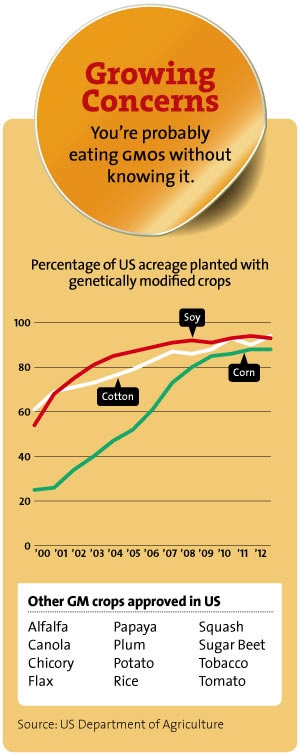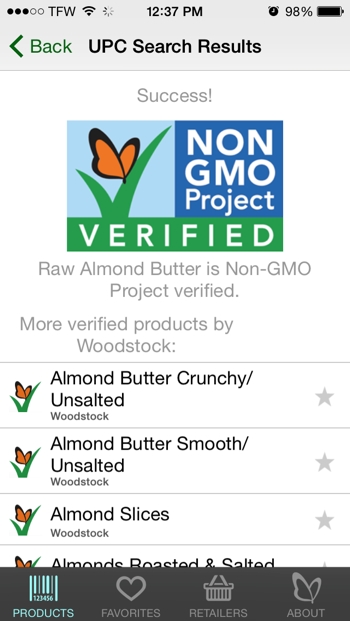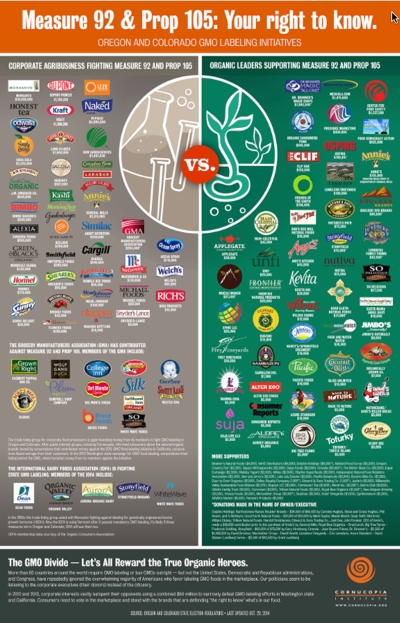How Safe is Your Animal from GMOs?
GMO: Should You Be Concerned?
The manipulation of organisms by genetic engineering is tinkering with Mother Nature on a very deep level, and the consequences are far-reaching and serious for humans, plants, animals, and the planet.
Walk with me while I help you understand this phenomenon, learn the real concerns about GMOs, and gear up to protect yourself and your animals from harm.
GMOs: What They Are
GMO stands for genetically modified organism. Other acronyms used to describe the same entities include GE (genetically engineered so-and-so) and GM foods or GM crops, etc.
What sets GMOs apart is the manipulation of an organism’s actual DNA in a laboratory, by the insertion of another species’ genes into the gene sequence of the target organism.
- The commonest example of GMOs is made by inserting bacterial genes of herbicide resistance into a crop plant. This is most often done by inserting genes of resistance to Roundup (glyphosate, the commonest herbicide in use on the planet, brought to you by Monsanto).
An example would be growing a GMO soy crop with herbicide resistance. “Roundup Ready” soy varieties allow a farmer to blanket his soybean field with glyphosate, and thereby kill all the weeds without killing his crop.
HR or herbicide resistant crops account for 85% of the GE planted acres in the world today, and most of that is “Roundup Ready” crops.
On the horizon are GE crops resistant to even more dangerous herbicides, like 2,4-D, the chief ingredient in Agent Orange that damaged so many people in Viet Nam.
Why?
Well, as you may have guessed, resistance to Roundup is appearing in weeds, so we now have "superweeds," much like the superbugs in hospitals from society's overuse of antibiotics.
Natural resistance like this is nothing new. Treat any population with a chemical and a few will resist it, breed, and make more resistant offspring who can laugh at the oncoming chemical.
Bacteria, insects, weeds, parasites, they all do this in Nature. Did Big Ag miss the memo on that?
- The second common class of GMOs results from the insertion of a bacterial gene that makes a pesticide into the target crop's genes. This is most commonly the bacteria called Bt, Bacillus thuringiensis, which elaborates a chemical that kills insect larvae.
So, GMO corn that has the Bt gene inserted into it will theoretically now resist corn borers, the larva that crawl in the tassel end of the cob and munch away, damaging the crop.
After a taste or two, the larva die from eating the Bt toxin that's now part of the corn plant.
Wondering what eating such a toxin laced crop would do to the eater, say the cow? Or your dog who eats that GMO corn in his kibble, or your horse in her sweet feed?
How about your dog who eats the cow who ate the GMO corn with the toxin built in?
How about you and your husband eating that cow? Or drinking her milk?
In fact, problems abound from non-target species eating the Bt toxins. More on that later.
GMOs: What They Are Not
Neil DeGrasse Tyson got this wrong, and he’s touted as some kind of genius in his field. I'll help you avoid making the same mistake. No PhD required.
Neil confused plant breeding or genetic selection with GMOs. Said we've been using GMO for tens of thousands of years.
Whoops.
A couple decades is much closer to reality, Neil.
Putting his foot squarely in his mouth, Neil told the folks concerned with GMOs to "chill out." His message went all over the internet, adding to the confusion about GMOs (that Big Ag spins for profit), and fueling the anti-labeling forces bent on keeping us in the dark about what's in our food.
Here’s expert Jeffrey M. Smith straightening Neil out in 2-3 minutes.
Trust me: you'll want to watch this.
And if you really want to dig deeper and learn even more, here's Jeffrey Smith's detailed Part 2 to Neil.
In it, he cites work done in Canada showing that 93% of a test group of pregnant women had Bt toxin in their blood.
The scientists who presented this data suggest the source of Canadian women's Bt toxin load was their regular consumption of milk and meat from animals who fed on GMO crops.
Gulp.
Slow and Thoughtful vs Quick and Dirty
Genetic selection has a history of thousands of years, and it happens both naturally and by man’s choosing which plants or animals to breed with one another.
It’s how we’ve started with dogs that looked like wolves and ended up with breeds who look nothing like wolves, to whit, Cocker Spaniels, Pugs, and French Bulldogs.
Man's genetic selection, like the natural selection that Darwin brought to light, is a slow process.
It’s how we went from ancestral maize (which was pretty much inedible unless ground and mixed with lime and cooked in various ways) to sweet corn that’s delicious even eaten raw on the cob.
Scientists Blew it With Wheat, Long Before GMOs. Can We Trust Them with GE?
Not to say that everything genetically selected has been a blessing to mankind. Far from it.
The “green revolution” of the 60’s, which set out to feed the world’s starving masses, hybridized wheat to produce ten times more yield per acre. In so doing, the nutritional composition of wheat unintentionally changed dramatically.
Small changes in the protein of wheat during this race to increase yield now provoke an immune response in the wheat eater that was never there in Grandma’s day.
I know this one personally. If I eat today's modern wheat in any form, I get stiff joints within 8 hours that often lasts for 24 hours or more.
Damn. No more pasta and sandwiches for this guy.
To learn more about these changes and their correlation to the epidemic of modern day obesity, don’t miss Wheat Belly, by Wm. Davis, MD cardiologist.
The book is a fascinating read, especially if you're fighting a runaway waistline.
Bottom line: plant breeding and animal breeding is generally safe and has a long history. GM is far more insidious genetic manipulation that is in its infancy and is already raising grave concerns for the health of people, plants, and animals.
Forcing Nature to Submit
Hubris and greed know no bounds when it comes to Big Ag.
Much as Monsanto has railroaded the GM crops to market with "safety studies" that are only 90 days long, and has bankrolled the anti-labeling campaigns in various states to keep consumers in the dark, GMOs are produced with a forced, rapid process compared to natural breeding or hybridization.
One species’ DNA has natural defenses against the introduction of another species’ genetic material.
It’s not easy to overcome this defense, so “gene canons” are used to blast the foreign DNA into the cell. (If that sounds a bit like rape to you, well, I'd agree.)
Sometimes, bacteria are used to infect the plant cells and carry in the foreign DNA.
Along with the desired genetic material can come unwanted bacteria or viruses. So, antibiotics are often used in the process of making a GM food.
And the process is very imprecise, more like a shotgun than a sniper’s rifle, so the potential for unwanted combinations of genes is significant.
Can you say "mutation?"
And mightn't some unintended gene combinations be harmful to other species, like humans and our animals?
Useful question and food for thought. No pun intended.
How Widespread Are GMOs?
In 2013, about 12% of cropland in the world was growing GM crops. The top countries who grow them are:
- USA
- Brazil
- Argentina
- India
- Canada
Current estimates from the Center for Food Safety indicate processed human foods have a 60-70% likelihood of containing GMOs.
Processed food.
Sounds a lot like kibble, doesn't it? Equine pelleted feeds, too.

This horse has left the barn.
60-70% is pretty high odds. As the graphic on the right shows, U.S. acres planted with GM corn or soy have steadily grown in the past dozen years.
The GM varieties of the top three crops are now all in the 90+% range.
To get a sense of how many grocery store processed foods contain some corn, watch the movie King Corn.
You'll be amazed.
Processed food manufacturers are some of the big players in spending money to block GMO labeling initiatives in various states.
The infamous Grocery Manufacturers of America (GMA), representing hundreds of food makers, has contributed millions of dollars to keep consumers in the dark about which foods contain GMOs.
Wouldn’t you like to know what you’re eating and feeding the animals in your care?
Health Effects of GMO Consumption
Here is a smattering of what’s been associated with GMO crop consumption in animals to date:
1. Liver damage and kidney damage (both in rats, Monsanto’s own data).
Independent data confirms this and adds heart, spleen, adrenal glands, and blood producing organs to the list of damage in rats fed GMOs.
2. Reproductive failure (miscarriage and infertility). Enlarged uteri in pigs fed GMO for 23 weeks.
3. Stomach inflammation in those same pigs cited above.
4. Gut flora disruption. We know how important they are, right?
5. Hormone dysregulation, including insulin. Another cause of our obesity epidemic?
This is enough to be very concerned about eating or feeding GMOs, and it's the tip of the iceberg. More health concerns than what's listed here are known, but far more is unknown, as the whole field of GE is so new.
I guess Big Ag missed the memo on the Precautionary Principle as well.
Shame on them. Now we've got to clean up their mess and live with their poisons, unleashed in the name of Profit Above All Else.
Agricultural Misfires from GMO Use
- More (not less) herbicide use, and stronger herbicides.
- Super weeds that need strong herbicides to kill (and are even more risky to humans, like 2,4-D).
- Resistance in insects.
- Harm to non-target insects, like Monarch butterflies, bees, and other beneficial insects.
- Harm to soil organisms, a key to raising healthy crops.
- No increase in crop yields, counter to what Monsanto would like you to believe.
The huge agribusiness companies who profit from GM sales try desperately to spin the story to make GMOs sound not only harmless, but GOOD for you and the planet!
Here's a great video summation of Five GMO Myths being busted:
For more evidence based myth busting on GE, with lots of references, here's an in depth report.
How About Natural Foods? Or Organic Foods?
Consumer Reports went to work testing both, and Reuters picked up the story. It’s an eye opener.
Foods labeled “natural” (remember that meaningless term, that N word?) were mostly found to contain GMOs.
Those meeting “organic” standards did not.
So, dear shopper, if you’re out to buy the convenience of prepared foods, for your animals or yourself, and you want to avoid the risks of eating genetically engineered food, you’ll likely be safe buying those foods labeled organic.
For now, at least.
What About Your Animals and GMOs?
You can do a little math and figure this piece out:
- Most of the corn and soy grown is now GMO. Sugar beets, too. Oh, and canola oil.
- Most of the processed (human) food (60-70%) now has GMO ingredients.
- Therefore, if you’re feeding processed pet food or horse feed, and the label includes any corn or soy (or products derived from either), or canola oil or beet derivatives, odds are very high your animals are being exposed to GMOs.
As is often the case, animals are studied to determine if humans might get sick from some new experimental drug or chemical or process. Here are some findings worth taking caution from:
In 2009, the American Academy of Environmental Medicine (AAEM) stated that, "Several animal studies indicate serious health risks associated with genetically modified (GM) food," including infertility, immune problems, accelerated aging, faulty insulin regulation, and changes in major organs and the gastrointestinal system.
The AAEM has asked physicians to advise all patients to avoid GM foods. [1. http://www.responsibletechnology.org/health-risks]
What Do Animals Think of Eating GMO?
Pigs wouldn’t eat it. You know, those guys who are happy to eat just about anything, including feces?
Yeah, those guys. Held out for something else.
Water buffalo in India won’t eat cottonseed cake that’s GMO.
Birds refused GMO corn in South Africa. Wildlife, including migratory geese, choose fields that are non-GMO for their in-flight snacks.
Cows, sheep, buffalo and horses grazing on harvested GMO fields died, their deaths believed to be associated with their GMO consumption.
Not a pretty picture.
Cows and GE Milk
When I was in my latter years of dairy practice in the late 80’s, rBGH, recombinant bovine growth hormone, had just come to market from Monsanto. It was one of the first genetically engineered products on the market.
A couple of our big dairies were considering using it, amid public concerns that the health risks to consumers were not well evaluated. (Monsanto had the only data out there: a 90 day study on 30 rats. What is it with Monsanto and these 90 studies??).
Monsanto then, much like it is doing today with GMOs, fought labeling of rBGH milk with millions of dollars. They ultimately bowed to public pressure. People wanted milk without rBGH, and state governments largely fought off anti-labeling efforts by Monsanto.
Research by independent sources revealed more mastitis, lameness, and deformed calves born to the cows injected with this GE hormone.
Today, rBGH is banned in the European Union, Japan, Australia, New Zealand and Canada. It's still used in the U.S., though milk without it is often labeled.
Monsanto sold the rights to rBGH to Pfizer. Guess they had enough headaches dealing with all the elections they had to buy to stop our GMO labeling.
GE Animals on the Horizon
Yes, it's not only crops and milk cows that are being tinkered with, there are other animals in the GMO pipeline as well.
They include:
- Hogs with more omega 3 fats in their bodies.
- Salmon that grow twice as fast as wild salmon.
- Goats that produce pharmaceuticals in their milk.
In creating GE animals, the new animals are produced by DNA microinjection, and there’s very little control of where that injected DNA ends up in the test animal. When misplaced, genetic defects and deformities are the result.
The survival rate of the process is on the order of 4% or less, bringing up all sorts of animal welfare concerns. And do the animals who “didn’t take” the new DNA properly end up on store shelves for human consumption, genetic defects and all?
What to Do About These Nasties?
Depending on your level of concern with GMOs, here are several things you can do to help avoid harm to you, your animals, and the planet.
- Home prepare your raw food. Don't know where to start? My friends at Dogs Naturally Magazine have a wealth of information for you (click the name of the magazine to get more info).
- Avoid processed food like the plague. That's the stuff in the middle aisles of the grocery store. High likelihood that if you're buying fresh ingredients and preparing food for yourself and your animals, you'll be avoiding GMOs. And the opposite is true, as you read above.
- Vote, when given the chance, to require labeling of all GMOs in all foods. This is polling place voting, and Monsanto, DuPont, and the Grocery Manufacturers of America will be throwing money against your efforts. Lots of money. We've got to see through that and help others learn and vote for labeling. The big boys know no one will willingly buy GMO tainted foods. They fear your vote to label.
- Akin to #1, vote with your pocketbook. Refuse to buy products made with GMOs, and boycott those GMA companies that are trying to hide GMOs by disallowing their labeling. You have a right to know what's in the food you buy, don't you think?
- Buy foods labeled organic, especially if they contain common GMO ingredients, like soy, corn, alfalfa, or sweeteners.
- Join me in joining the Center for Food Safety to keep up with trends in this rapidly changing landscape.
- When shopping, look for verified non-GM foods on the market. Check out the Non-GMO Project, who lists them.
- For a higher tech solution, get their iPhone app, which'll scan UPC codes for things you while shopping. (Warning: several products I have in my office didn't show up in my testing of the app, including my organic Pink Lady apples and the shelled hemp seed that I put in my smoothies most every day. I know these are all gmo-free, but they just aren't in the Non-GMO Project's database yet.)
Here's what the app looks like on my phone after scanning a UPC code on my almond butter:

To help you vote against the Grocery Manufacturers of America (a front group who oppose your right to know what's GMO), the graphic above shows the companies they represent (who should be ashamed of themselves, and not receive a penny of your hard earned income).
Clicking that poster will bring you to the Cornucopia Institute who's been been tracking the companies who've donated money to either:
- (On the left side) Keep you in the dark by opposing labeling. Boycott these buggers, who include Burt's Bees (now owned by Chlorox), Naked Juice and Izze (Pepsico), Larabar, Cascadian Farm, and Muir Glen (General Mills), and RW Knudsen and Santa Cruz Organic (JM Smucker); or
- (On the right side) Help GMO labeling initiatives in various states, most recently Oregon, California, Washington, and Colorado. Buy from these good guys: Nature's Path, Nutiva, Clif Bar, Lundberg, and more.
When you get to the Cornucopia site, click that poster a couple of times and it'll enlarge for easy reading and forming your opinions of which companies deserve your dollars and which deserve your scorn and boycott. They'll also help you print it if you'd like to carry it with you while shopping.
Whole Foods contributed to help labeling, but carries many of the offensive products from companies who are trying to keep you in ignorance, so caution is in order if you opt to shop there.
What's your take on GMOs? Have you changed how you feed your animals or yourself since learning about them? Any tricks and tips to add? Tell us in the comments.
GE is a force to be reckoned with and it'll take a lot of us to stop the greed mongers intent on running it full steam ahead down this dangerous path.
But, take heart:
Never doubt that a small group of thoughtful, committed citizens can change the world; indeed, it's the only thing that ever has.
Margaret Mead
Amen.





I buy a lot of my food from the marked down section of the supermarket, I buy my dogs reduced priced chicken and meat also. I cook it up a little and mix it with Wysong dry.
I am a vegetarian, except for an occasional tuna sub.
I hope this is good enough, I can’t always afford organic, I don’t want to think about GMO right now. There are only so many things I can worry about.
Awesome article also timely! Just purchased ABC’s GRP supplement for my horses. With all that Roundup being used in hay fields, corn fields and not to mention what is in the air this product may be a step in the right direction.
Well done, Dr. Falconer!
I am very much in awe of the amount of time and clear-headed research you did for this piece and admire how you were able to present some sticky and sickly information.
I will say that my horses eat a type of non-GMO Beet Pulp called Speedi-Beet from the UK, but one bag of that is equivalent to 3 bags of regular GMO variety here. (Order from http://www.countrysideorganics.com) The cost is about the same as 3 bags of GMO laden US sourced beet pulp. Non-GMO alfalfa-hard to find unless I use Chaffhaye (www.chaffhaye.com) or buy hay cubes that are COMBINED WITH OTHER GRASSES-like alfalfa with timothy or alfalfa with oat hay. When you combine alfalfa with another grass, I’ve been told that the other grass will not survive if planted with the GMO crop (here, alfalfa). So the combination hay cubes are theoretically safe.
But for my dogs, Loma as you know, provoked the question “Does feeding commercially farmed animals who ate GMO feed affect the health of a dog?” And I wrote to you stating my observations of the numerous sebaceous cysts since getting dog food meat at the grocery store instead of locally raised sources, in the last THREE MONTHS.
IN a week, I drastically cut her commercial meat consumption. I’d say she’s getting maybe 25% still in the form of chicken necks that I cannot yet find locally. I found locally raised grass fed beef to do a trial.
IN ONE WEEK: The number of cysts have reduced by half-no supplements, remedies, etc. PURELY decreasing her exposure to GMO fed meat sources.
You mentioned in your article that children improved quickly once GMOs were removed….I venture to say that it is the same with animals.
I plan to add healthy grains/veggies to her diet from SOJOS (the only way I can think of to reduce the overall meat content, completely remove GMOs from her diet, and still afford grass fed meat). I am thankful dogs are in the omnivore category because this would be cost-prohibitive to feed a non-GMO diet in the form of BARF or Prey-Animal model.
What I am really amazed about is the thought of I myself being very careful about what I eat and not supporting commercial animal raising. Yet, to afford to feed two active 50 pound dogs on a meat-based diet, homemade, raw, etc, breaks my bank. AND, I am supporting cruel farming methods…AND I am supporting GMO farming!
SO to consider the BIG PICTURE here, not to support BigPharma, GMO, cruel animal rearing, and after re-reading what Dr. Pitcairn stated about feeding less meats since they are considered heavy in pollutants etc, I feel better about my decision.
I am eager to watch her full healing once the poisons are removed. Whatever I can do to reduce exposure to those toxins, I will do. Now that I see her body is healing SO FAST, I’d be crazy not to take the hint.
I thank my dog, Loma for showing me the impact GMOs have had on her body and I thank her for being the canary in the coal mine. She’s just raised many red-flags for my own pack, herd, and myself as well as all of my consulting clients.
I am being reminded to see the WHOLE, and not to get too caught up in one method of feeding dogs. They are adaptable creatures and thrive with CLEAN FOOD.
Thank you Dr. Falconer for the courage to write about such a hot topic.
Remarkable reporting, Lizzy, and it sure sounds like Loma was trying to get rid of something, doesn’t it? I look at surface phenomena in general, but especially cysts and fatty tumors as “waist baskets” out of harm’s way.
I’m with you on the Sojo’s approach. I think it makes perfect sense, as dogs really are omnivores, after all. Healthy, clean ingredients that are not meat can make feeding more affordable and I suspect, many times, less toxin-prone. Keep us posted on your results.
Will – I truly appreciate this information – thanks for doing the research. Very timely – as I was getting ready to write a short article, as my clients having gastric, health complications, thought to from GMO products. – However your in depth research much better….
GMO products are NOT foods – Food is nourishment, necessary for life – it doesn’t kill things…
As a Classical Homoeopath — I began researching GMO’s – as parents totally too busy in life to check quality of foods they serve. Frequently young children have stomach conditions as an allergic trait, inherited reaching to miasmatic layers – then have consider another causation – vaccinations. Today – have to recheck sources of foods. In the past there wasn’t this need for Family Food Detective work.
As you noticed – rural India – family food close at hand, with few varieties, choices, simple food – fresh (no refrigeration) – isn’t processed, packaged, shipped long distances needing preservatives, coloration, waxing, fumigation, etc.
Some in N. America, had noticed their own and family’s health was affected by certain products – checked sources, and stop eating products with GMO’s.
I will be pleased to share this with Classical Homoeopaths around the world
Thanks, Joan.
Yes, life has become more complicated with this entirely forced subversion of Nature. One video clip I stumbled on, I think it was in reference to the movie “Genetic Roulette,” which is on my to watch list now, featured an MD saying, “It’s never NOT worked to get the sick child off GMO foods.”
An obstacle to cure, I’m certain, continuing to take in these strangely tweaked foods. It’s time we stop ignoring them or being too busy to learn what we’re eating and feeding. We can no longer afford that.
” An obstacle to cure, I’m certain, continuing to take in these strangely tweaked foods. It’s time we stop ignoring them or being too busy to learn what we’re eating and feeding. We can no longer afford that.”
So true!
Much appreciated!! Your information has clarified some things for me and I’m getting that app right now!